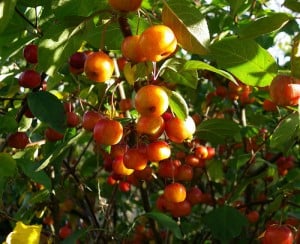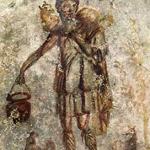We’re blogging through St. Thomas Aquinas’ Compendium Theologiae, sometimes called his Shorter Summa. Find the previous posts here.
In the previous post, we began to explain what it means for a being to have an essence, so as to understand what Thomas means when he says that God is identical with His Essence. In this post, we continue to provide background to Thomas’ words, explaining what he means by definition, genus, and species. In each case, Thomas’ notion is considerably more precise than the every day meaning of the word; a little care now will prevent great confusion later on.
Thomas continues,
The essence of anything is that which its definition signifies.

This sentence is deceptively simple, because of that word definition. A definition, to us, is what a word means, and so by analogy what a thing is. But to Thomas, a definition is a very precise thing with more structure than we usually recognize. Consider this definition of an apple: “An apple is the fruit of an apple tree.” What is it? It’s a fruit. What kind of fruit? The fruit of an apple tree. In Thomas’ terms, every definition begins with a genus, a kind of thing, and adds to it a specific difference, something that distinguishes certain things of that kind from other things of that kind. Apples and oranges are both fruit, but only apples are fruit of the apple tree.
You can see the same structure in action in the phrase “apple tree”. What is it? It’s a tree. What kind of a tree? A tree that bears apples. “Tree” is the genus, and “bearing apples” is the specific difference.
A definition defines a species, a subdivision of a genus. Thus, apples are a species, metaphysically speaking.
Don’t get hung up on the biological and taxonomic sense of the words genus and species. I remember in school being taught that every living thing had a kingdom, phylum, class, order, genus, and species. In this scheme, the genus and species are always the most precise designations, the most specific designations.
Thomas’ usage, from which this ultimately derives, is far more general. The term apple is a species, metaphysically speaking; but it also can be a genus, because it has subsets of its own: Macintosh apples, Granny Smith apples, Red Delicious apples, and so forth.
So Thomas is saying in the sentence above that the name of an essence is its definition. The essence of an apple is that it is fruit of an apple tree.
Now, at least, we can go on.
The essence of anything is that which its definition signifies. This is identical with the thing of which it is the definition, unless per accidens something is added to the thing defined over and above its definition.
Remember what we said in the last post: a thing is the kind of substance it is by virtue of its essence; and in addition to its substantial form it may also have accidents, things that are not essential but which distinguish it from other things of its kind. This apple is red, that apple is green.
But if a thing has no accidents, nothing which distinguishes it from other members of its species, then it must be identical to its essence. If all apples had precisely the same shape, color, firmness, and so forth, if they were all perfectly and necessarily identical, we could say that an apple and its essence were the same.
As Thomas says,
Thus whiteness is added to man, over and above the fact that he is a rational and mortal animal. Hence rational and mortal animal is the same as man; but whiteness, so far as it is white, is not the same as man.
The definition of man, according to Aristotle, is that he is a rational animal, an animal that can think. (Thomas adds the qualifier mortal, since according to Porphyry both mortal men and the gods were men; mortal men were mortal, and gods were immortal.)
It is a man’s essence to be a rational animal. But the color of a man’s skin is an accident, something added to a given man and differing from man to man. And so, a man is rational per se, but white per accidens.
Now, this is the normal state of things for objects of our existence. In the next post, we’ll consider things which do not have any accidents.
____
photo credit: anne arnould via photopin cc












